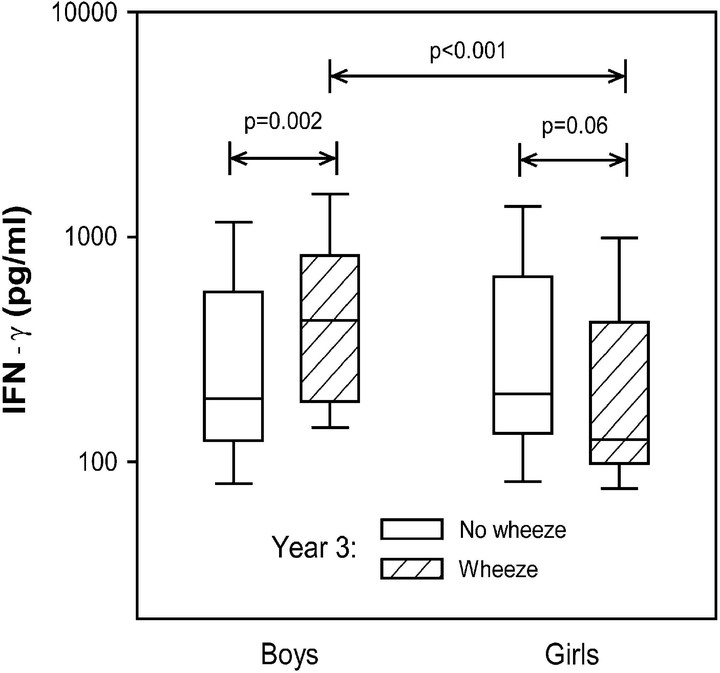Sex-related differences in immune development and the expression of atopy in early childhood

Abstract
BACKGROUND: Sex and age are known to influence the clinical expression of asthma and allergic diseases. OBJECTIVE: We sought to evaluate whether immune response profiles also vary by sex and age. METHODS: We performed a prospective birth cohort study (Childhood Origins of Asthma) designed to evaluate interactions among age, sex, immune responses, and virus infections on the development of asthma and allergic diseases. Two hundred eighty-nine subjects were enrolled at birth, and 275 maintained prospective follow-up for 3 years. Cytokine response profiles at birth, 1, and 3 years of age; rates of wheezing, atopic dermatitis, and viral illnesses; and biomarkers of atopy, including total and specific IgE levels and peripheral eosinophil counts, were evaluated. RESULTS: PHA-induced IFN-gamma responses were higher in boys at 1 year of age (median, 35 vs 19 pg/mL; P < .001) and at 3 years of age (median, 282 vs 181 pg/mL; P = .07). Among children who wheezed during the third year of life, boys had increased IFN-gamma, IL-5, and IL-13 responses at age 3 years (P < .001, P = .008, and P = .01, respectively). Boys also demonstrated increased rates of sensitization (P = .05 at year 1), total IgE levels (P = .03 at year 1 and P = .006 at year 3), and peripheral eosinophil counts (2.62 vs 1.85; P = .05 at year 3). CONCLUSION: Sex-specific differences in immune responses develop during early childhood; some of these differences developmentally proceed, whereas others occur in parallel to the clinical expression of various atopic phenotypes. CLINICAL IMPLICATIONS: The differential expression of atopic diseases between boys and girls in early childhood is accompanied by sex-specific differences in immune response profiles.